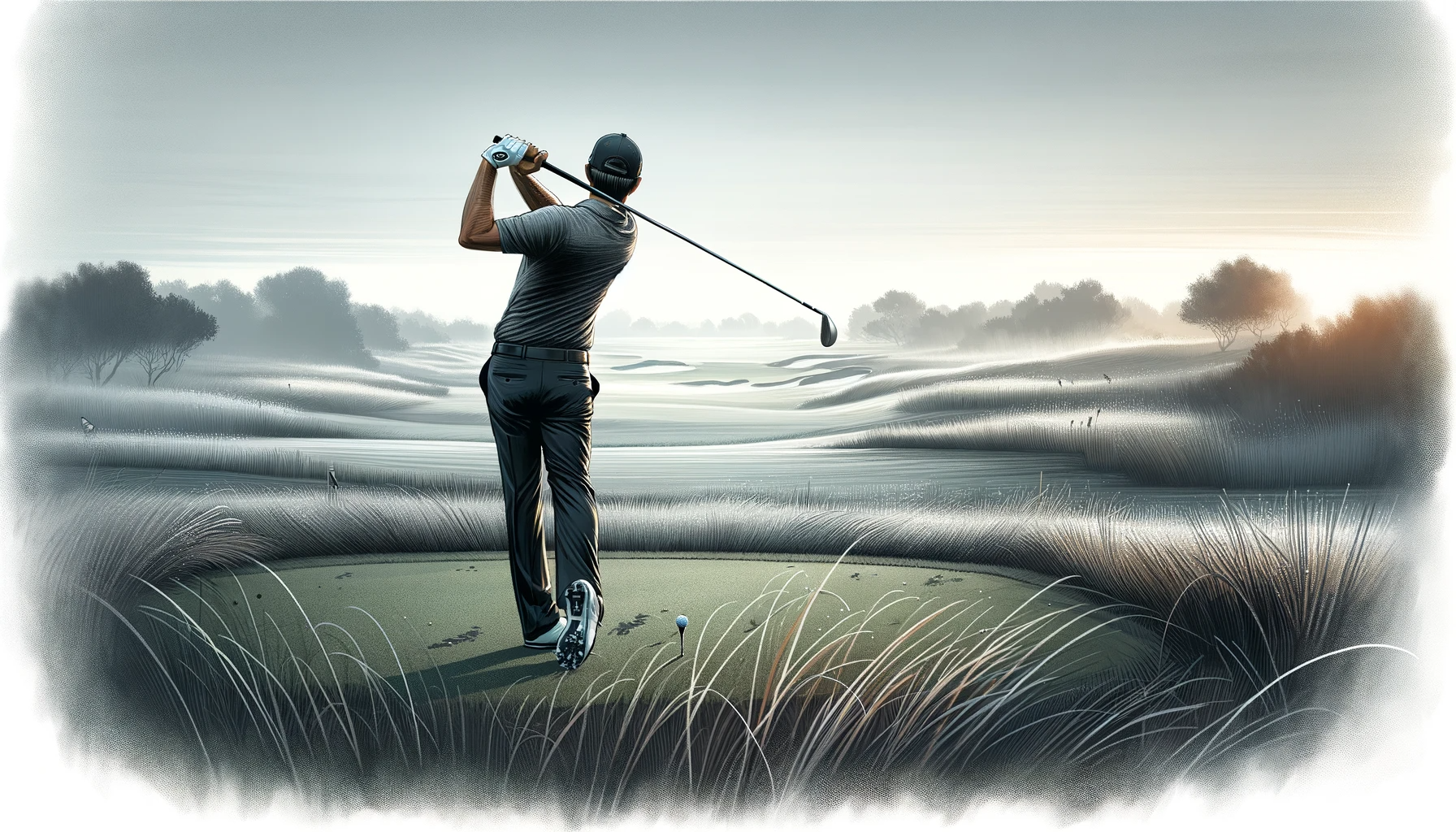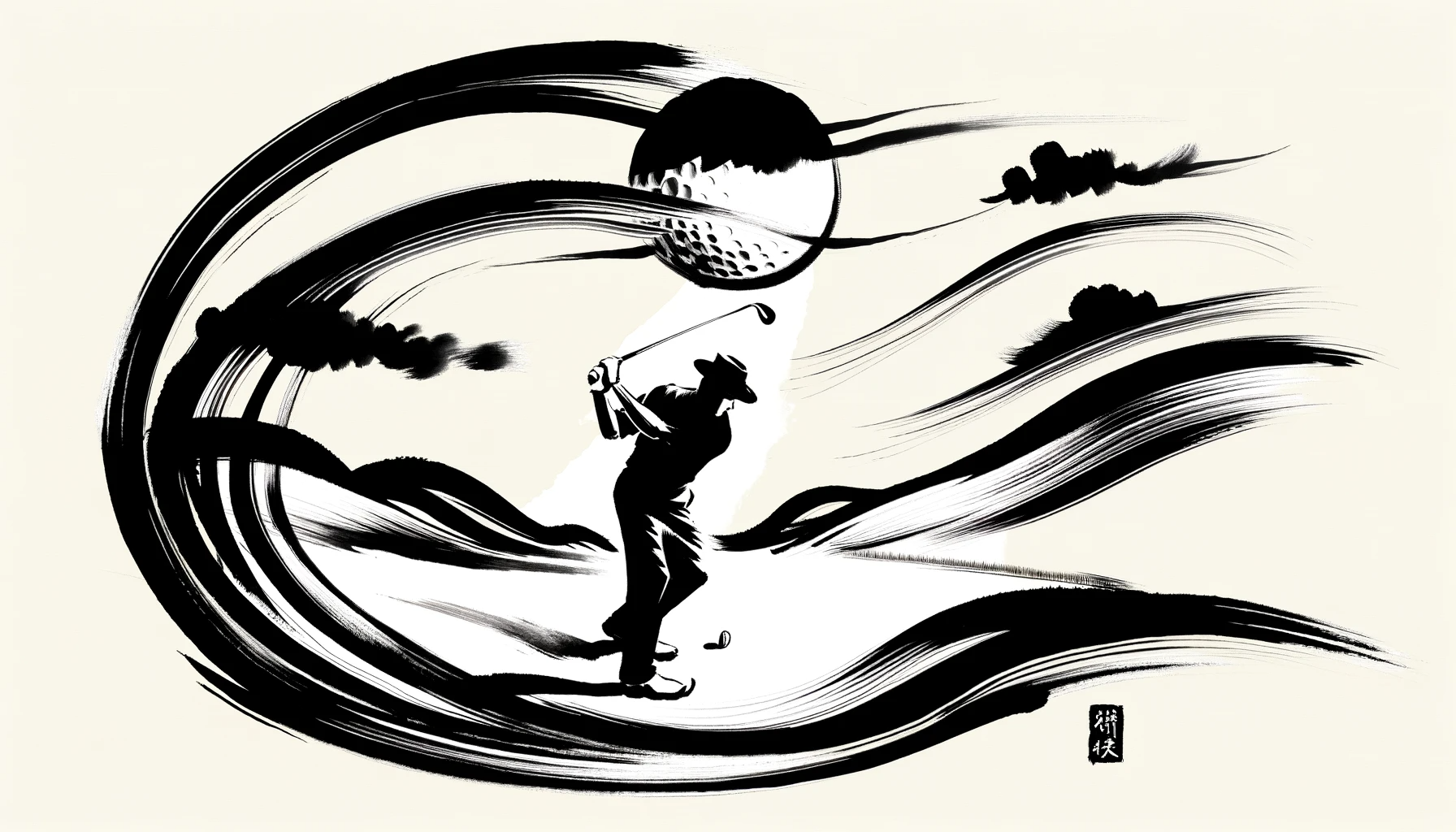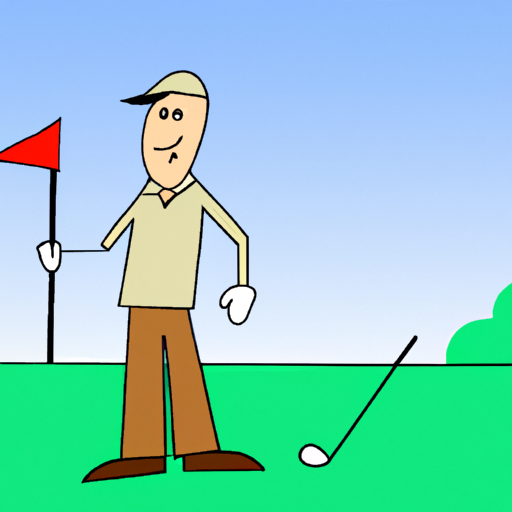- Home
- Hitting Irons
- How to Hit Irons Lower
Mastering the Art of Low Iron Shots: A Weekend Golfer's Guide to Precision and Power
Struggling with high-flying iron shots that just won't cooperate? You're not alone. As a weekend golfer, I've faced the same challenge and found the keys to success. In this article, "Mastering Low Iron Shots: A Weekend Golfer's Ultimate Guide," we delve into practical, easy-to-implement strategies that will transform your game. From tweaking your swing to choosing the right equipment, we cover it all. Plus, there's a handy FAQ section at the end for quick insights. Get ready to hit those irons lower and with more confidence than ever before!
As a fellow weekend golfer, I know the frustration. You're out on the course, you've lined up your shot, but instead of that satisfying low trajectory that sails smoothly towards the green, your ball arcs high and falls short. It's a common problem, but one that can be fixed.
I've been there, watching in envy as more experienced players effortlessly keep their iron shots low and controlled, wondering what secret they know that I don't. It's not just about power; it's about technique, practice, and a bit of insider knowledge. Without understanding the nuances of hitting irons lower, you're missing out on a crucial aspect of the game.
That's why I've put together this comprehensive guide. Drawing from my 25 years of golfing experience and countless hours of practice and learning, I'm here to share with you the secrets of mastering low iron shots. From the basic mechanics to advanced techniques, this guide is your roadmap to becoming the golfer who impresses on the course with precision and power.
 Unlocking Precision: Hitting Irons Lower in the Misty Morning
Unlocking Precision: Hitting Irons Lower in the Misty MorningUnderstanding the Basics: The Science Behind Low Iron Shots
Ah, the quest for the elusive low iron shot – a challenge that even seasoned golfers like us often grapple with. Let me take you back to a sunny afternoon on the course. There I was, standing over my ball, feeling confident. But as I swung, my ball soared high, caught a gust, and landed way short of where I intended. Frustrating, right? That day, I realized that understanding the science behind low iron shots is crucial.
The Mechanics of Iron Shots: It all starts with the basics. The trajectory of your iron shots is influenced by several factors: the loft of the club, the angle of attack, and the speed of your swing. A higher loft typically sends the ball higher, which isn't what we want for a low shot. So, choosing a club with a lower loft is step one. But there's more to it than just club selection.
Club Selection and Angle of Attack: Picture this: you're lining up with a 7-iron. Now, the key is to adjust your angle of attack. A steeper angle often results in a higher shot. So, for a lower trajectory, you want to strike the ball with a shallower angle. This means positioning the ball slightly back in your stance and focusing on hitting through the ball, not just at it.
The Importance of Ball Position: Ball position is critical. Too far forward, and you're adding loft to the club; too far back, and you risk a chunky shot. I found the sweet spot is just left of center for right-handers (and vice versa for lefties). This position helps in creating the right angle of attack for that desirable low flight.
Swing Path and Clubface Control: Your swing path and where your clubface points at impact are also vital. A slightly inward-to-outward swing path helps in keeping the shot lower. And remember, the clubface should be square to the target at impact. I learned this the hard way when my shots kept veering off to the right.
Practice Tip: Here's a drill I often use. Place a tee a few inches in front of your ball in line with your target. Focus on striking the ball and then the tee on your follow-through. This encourages a shallower angle of attack and a square clubface, essential for hitting those low iron shots.
Incorporating these elements into your game isn't just about technical adjustments; it's about understanding the 'why' behind each shot. Once I grasped these concepts, my iron shots started to improve dramatically. Remember, it's not about overpowering the ball; it's about precision and control. So, next time you're on the course, keep these tips in mind, and watch as your iron shots fly lower, stronger, and exactly where you want them to go.
Technique Tweaks: Adjusting Your Swing for Lower Trajectory
Let's talk about tweaking our swing to master those low-flying iron shots. I remember a time when I struggled with this myself. I'd watch in awe as more experienced players sent their balls zipping along a low trajectory, wondering how they did it. It took some practice and a few adjustments, but I finally got the hang of it. Let me share some of these game-changing tweaks with you.
Grip Adjustments: Your grip is more than just how you hold the club; it's the foundation of your swing. To hit lower shots, try strengthening your grip slightly. This doesn't mean squeezing the club harder but rotating your hands a bit more to the right (for right-handers) on the grip. This adjustment helps in closing the clubface at impact, reducing the loft and thus lowering the ball flight.
Stance Modifications: Your stance sets the stage for your swing. For lower iron shots, I found that a slightly narrower stance works wonders. It allows for a more controlled swing and helps in maintaining the right balance throughout the shot. Also, positioning the ball slightly back in your stance, as I mentioned earlier, is key.
Swing Path and Speed Adjustments: The path and speed of your swing are crucial in determining the flight of the ball. For lower shots:
- Aim for a smoother, more controlled swing rather than a faster, more aggressive one.
- Focus on a shallower swing path. Imagine your club sweeping through the ball, rather than chopping down on it.
- Practice maintaining a consistent swing speed throughout. A sudden increase in speed can send the ball higher than intended.
The Follow-Through: A common mistake is to stop the swing abruptly after hitting the ball. Instead, focus on a full follow-through. This ensures that you're not adding any unwanted loft to the club at impact. Picture your club continuing its path towards the target even after the ball has been hit.
Mental Imagery: Visualization is a powerful tool. Before each shot, I like to take a moment to visualize the trajectory I want. This mental imagery helps in aligning my body and swing to achieve the desired result.
Practice Drill: Try the 'Punch Shot' drill. This involves making a three-quarter swing with an emphasis on a controlled follow-through. It's a great way to practice keeping your iron shots low.
Remember, these adjustments might feel a bit strange at first, but with practice, they'll become second nature. The key is to be patient and persistent. Each small tweak can have a significant impact on your game. So next time you're out on the course, give these tips a try and watch as your iron shots start to fly lower and with more control, just like those players you've admired.
Practice Makes Perfect: Drills and Exercises for Consistency
Let's dive into the heart of improving our golf game – practice. I've always believed that the right drills and exercises can transform a good golfer into a great one. I remember this one weekend, I was struggling with my iron shots, hitting them higher than I wanted. That's when I decided to focus on specific drills and exercises, and boy, did it make a difference!
Targeted Drills for Improving Low Iron Shots:
1. The Half-Swing Drill: Start by taking half-swings with your iron, focusing on keeping the ball flight low. This drill helps in controlling the swing and understanding the impact of a reduced swing on the ball's trajectory.
2. The Towel Drill: Place a towel about a foot in front of the ball. The goal is to hit the ball without disturbing the towel, encouraging a shallower angle of attack.
3. The Tee Drill: Place a tee in the ground about two inches in front of the ball, slightly higher than the ball's level. Aim to hit the ball and then the tee on your follow-through. This promotes a controlled, forward-leaning club shaft at impact, essential for lower shots.
Strength and Flexibility Exercises for Golfers:
1. Core Workouts: A strong core is vital for a stable and powerful golf swing. Exercises like planks, Russian twists, and bicycle crunches are great for building core strength.
2. Flexibility Training: Flexibility in your shoulders, back, and hips is crucial for a smooth golf swing. Incorporate stretches and yoga poses into your routine to improve flexibility.
3. Wrist and Forearm Strength: Strong wrists and forearms allow better control of the club. Simple exercises like wrist curls and reverse wrist curls can be very effective.
Consistency in Practice: Consistency is key. I make it a point to practice these drills and exercises regularly. It's not about how long you practice but how focused and consistent your practice sessions are.
Tracking Progress: Keep a practice journal. Note down what works and what doesn't, and track your progress over time. This has helped me stay motivated and focused on my goals.
Mental Rehearsal: Don't underestimate the power of mental practice. Visualizing successful low iron shots can significantly impact your muscle memory and confidence on the course.
Incorporating these drills and exercises into your practice routine can dramatically improve your ability to hit those low iron shots. Remember, every pro golfer started where you are now. With dedication and the right practice strategies, you'll soon be hitting those low iron shots with the precision and consistency you've always wanted. So, grab your clubs, and let's get to practicing!
 Elegance in Motion: Perfecting Lower Iron Shots in Ink
Elegance in Motion: Perfecting Lower Iron Shots in InkAdvanced Strategies: Equipment and Mental Game
Alright, let's talk about the final pieces of the puzzle in mastering low iron shots: the right equipment and the right mindset. I remember a tournament where my usual confidence was shaken. My iron shots were flying higher than I wanted, and I couldn't figure out why. That's when I realized the importance of not just skill and practice, but also having the right clubs and mental approach.
Choosing the Right Irons for Your Game:
1. Clubhead Design: Look for irons with a lower center of gravity. These tend to promote a lower ball flight, which is exactly what we're aiming for.
2. Shaft Flex: The right shaft flex is crucial. A shaft that's too stiff or too flexible can dramatically affect the trajectory of your shots. Consulting with a club fitter can be a game-changer here.
3. Grip Size and Material: Don't overlook the grip. A grip that's too large or too small can affect your swing mechanics. Choose a grip that feels comfortable and offers good control.
Mental Strategies for Confidence and Focus:
1. Pre-Shot Routine: Develop a consistent pre-shot routine. This helps in calming nerves and setting the stage for a successful shot.
2. Positive Visualization: Before each shot, visualize the ball flight you want. This positive imagery can boost your confidence and improve your focus.
3. Managing Expectations: Golf is a game of ups and downs. Accept that not every shot will be perfect and learn from the misses.
On-Course Adjustments:
1. Weather Conditions: Be mindful of the weather. Windy conditions might require some adjustments in your club selection and swing.
2. Course Management: Think strategically about each shot. Sometimes, a lower iron shot might not be the best option depending on the course layout.
Practice with Purpose:
1. Specific Drills: Incorporate drills that mimic on-course scenarios. This helps in transferring your skills from the practice range to the course.
2. Feedback and Adjustment: Regularly assess your performance and make necessary adjustments. Whether it's your equipment or technique, staying adaptable is key.
Once, during a particularly challenging round, I realized my iron shots were consistently flying too high. After the round, I spent time with a club fitter and discovered my shafts were too flexible for my swing speed. The adjustment we made was a game-changer. Suddenly, my shots were lower, more controlled, and more consistent.
Incorporating these advanced strategies into your game requires a blend of the right equipment, mental fortitude, and continuous practice. Remember, golf is as much a mental game as it is a physical one. Equip yourself with the right tools, both in your bag and in your mind, and you'll be well on your way to mastering those low iron shots. Keep practicing, stay focused, and enjoy the journey of improving your game!
Key Takeaways: Your Path to Hitting Lower Iron Shots
As we wrap up this comprehensive guide on how to hit irons lower, let's revisit the key points that will help you transform your game. Remember, the journey to mastering these shots is both challenging and rewarding. Here are the essential takeaways:
1. Understand the Basics:
- Master the mechanics of iron shots.
- Choose the right club and adjust your angle of attack.
2. Technique Tweaks:
- Modify your grip and stance for better control.
- Adjust your swing path and speed for a lower trajectory.
3. Practice with Purpose:
- Engage in targeted drills like the Half-Swing and Towel Drill.
- Incorporate strength and flexibility exercises into your routine.
4. Equip Yourself Right:
- Select irons with a lower center of gravity and the right shaft flex.
- Ensure your grips are comfortable and offer good control.
5. Mental Game Mastery:
- Develop a consistent pre-shot routine.
- Practice positive visualization and manage your expectations.
Take Action:
- Start implementing these strategies in your practice sessions.
- Share your progress and stories with the Golfeaser community.
- Sign up for our newsletter for more tips and insights.
- Live by the Golfeaser Manifesto: improve your game, hit long drives, and enjoy the camaraderie of golf.
Engage with the Community:
We at Golfeaser believe in learning from each other. Share your journey, your struggles, and your victories. How have these tips helped you hit lower iron shots? What challenges have you overcome? Your story could inspire fellow golfers in our community.
Final Thoughts:
Golf is a journey of continuous improvement and enjoyment. By focusing on hitting your irons lower, you're not just improving a single aspect of your game; you're embracing a philosophy of growth and excellence. So, are you ready to take these lessons to the course and see the difference in your game? Let's hit those low iron shots and make every round count!
Comprehensive FAQ on How to Hit Irons Lower
What is the ideal ball position for hitting irons lower?
What is the ideal ball position for hitting irons lower?
The ideal ball position for hitting lower iron shots is slightly back in your stance, closer to the center. This position helps create a shallower angle of attack, reducing the loft at impact and resulting in a lower ball flight.
How does grip affect the trajectory of iron shots?
How does grip affect the trajectory of iron shots?
Adjusting your grip can significantly influence the trajectory of your iron shots. A stronger grip (rotating your hands slightly to the right for right-handers) can help close the clubface at impact, reducing loft and producing lower shots.
What swing adjustments are necessary for lower iron shots?
What swing adjustments are necessary for lower iron shots?
To hit irons lower, focus on a smoother, more controlled swing with a shallower path. Avoid aggressive, steep swings, and ensure a full follow-through to maintain a consistent trajectory.
Can club selection impact the height of iron shots?
Can club selection impact the height of iron shots?
Yes, club selection plays a crucial role. Clubs with a lower loft will naturally produce lower shots. Additionally, using irons with a lower center of gravity can help achieve a lower ball flight.
What are some effective drills for practicing low iron shots?
What are some effective drills for practicing low iron shots?
Effective drills include the Half-Swing Drill for control, the Towel Drill to encourage a shallower angle of attack, and the Tee Drill to promote a forward-leaning club shaft at impact.
How important is mental imagery in hitting irons lower?
How important is mental imagery in hitting irons lower?
Mental imagery is crucial. Visualizing the desired ball flight before each shot can improve focus, confidence, and execution, leading to more consistent low iron shots.
What role does flexibility and strength play in hitting lower iron shots?
What role does flexibility and strength play in hitting lower iron shots?
Flexibility and strength, especially in the core, shoulders, and wrists, are vital for a controlled and powerful golf swing. They enable better swing mechanics and consistency in hitting low iron shots.
How can weather conditions affect iron shot trajectory?
How can weather conditions affect iron shot trajectory?
Weather conditions, particularly wind, can significantly affect the trajectory of iron shots. Adjusting club selection and swing mechanics may be necessary to maintain a low trajectory in windy conditions.
What mental strategies can help in hitting irons lower?
What mental strategies can help in hitting irons lower?
Developing a consistent pre-shot routine, practicing positive visualization, and managing expectations can help maintain focus and confidence, essential for hitting lower iron shots.
Are there specific exercises to improve low iron shots?
Are there specific exercises to improve low iron shots?
Yes, exercises that build core strength, enhance flexibility, and strengthen wrists and forearms can directly improve your ability to hit irons lower.











